
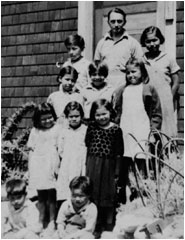
Inkameep and Nk'Mip
The Osoyoos Indian Band, or Nk'Mip in the Okanagan language, was formed in 1877 and is part of the Okanagan Nation. Today, approximately 370 band members live on the Osoyoos Indian Reservation near Oliver, British Columbia. The reservation is often called the Inkameep Reserve and the band itself is sometimes mistakenly called "Inkameep," reflecting a common error made by Canadian government officials: "naming" people for the place they inhabit. Inkameep is the phonetic spelling of the contemporary word Nk'Mip, which the band uses. Inkameep Day School was built by Chief George Baptiste, a man Anthony Walsh described as "ahead of his time in that he wanted his children taught within their own background, not sent away." The school itself is surrounded by the rich visual history of the Okanagan peoples. For example, Nk'Mip Reserve was surrounded by hills in which early rock paintings could still be found.
During Anthony Walsh's tenure at Inkameep Day School, the school became a focus for building bridges between Native and non-Native communities, a place where concepts of citizenship and human rights could be examined quietly and practically. The activities in the school and their impact on the world outside gave profound personal testimony to the benefits of building a respectful, multicultural environment. In 1941 Walsh participated in the founding of the "Okanagan Society for the Revival of Indian Arts and Crafts," a chapter of the BC Society for Indian Arts and Welfare. Members lobbied the provincial and federal governments for changes in health and education on reserves. In 1944, just before Walsh left Inkameep, the society submitted a brief to the prime minister of Canada outlining strategies to improve the lives of Canadian Native people, recognizing their rights of citizenship and property. This led to the establishment of a government committee to examine and reconsider the Indian Act. An editorial appearing in 1944 in Saturday Night, a national news magazine, reads:
It seems odd that the most intelligent and understanding suggestions for modernization of Canada's policy towards the Indians of the Dominion should have come from a little community in British Columbia. But such is the case.
Previous Page »» The Story
Next Page »» Chief Batiste George
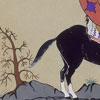 |
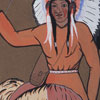 |
 |
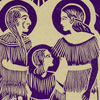 |
 |
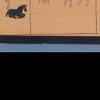 |
![]()
 Knowledge Network Segment
Knowledge Network Segment
![]() View Video Clip
View Video Clip
APTN National news
![]() View Video Clip
View Video Clip
![]()
Start of the artwork program
![]() Listen to Audio Clip
Listen to Audio Clip
CBC Audio National Arts Report and the Afternoon Show
![]() Listen to Audio Clip
Listen to Audio Clip

